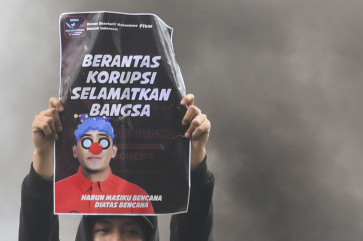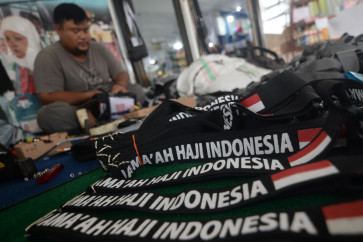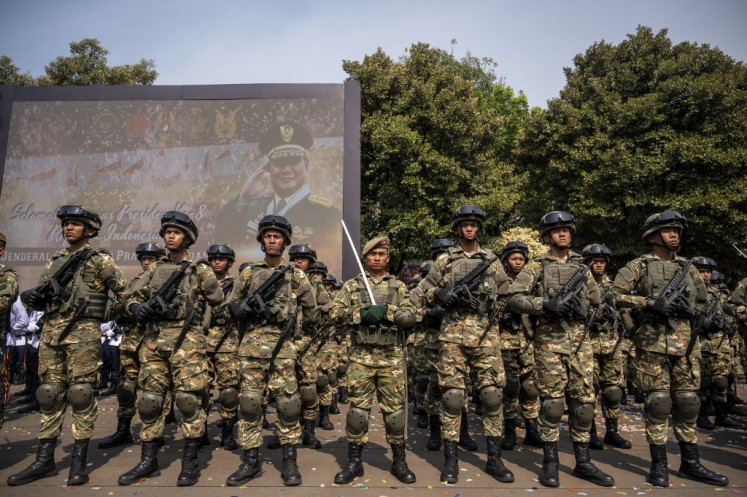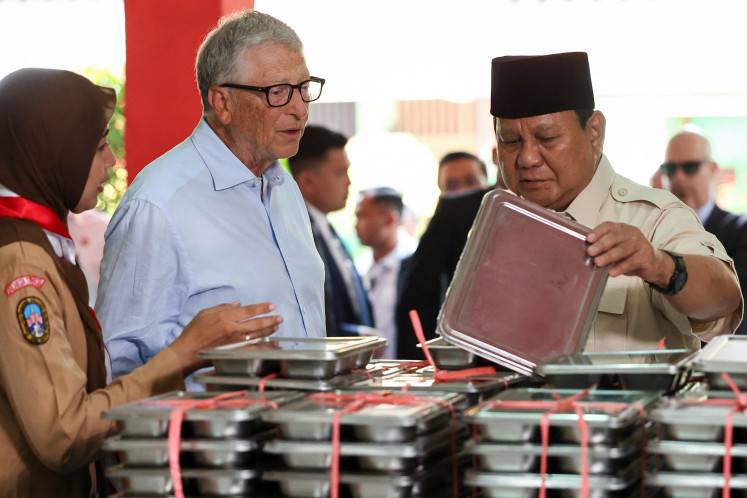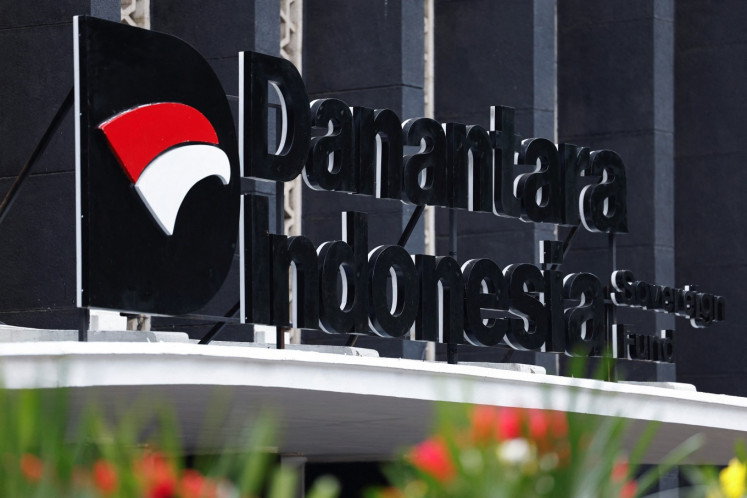Sumarmi Arimbi: The ties that bind
JP/Simon Sudarman“This is the process used to make jumputan [tie-dyed] cloth,” the 51-year old says, not slowing down as she demonstrates her finely honed skills
Change text size
Gift Premium Articles
to Anyone

JP/Simon Sudarman
“This is the process used to make jumputan [tie-dyed] cloth,” the 51-year old says, not slowing down as she demonstrates her finely honed skills.
Sumarmi has been exercising these skills since 1991, as part of her mission to protect and produce jumputan cloth. When she began nearly 20 years ago, there was little production of the cloth, and hers were among the efforts made to revive the craft.
Sumarmi, who was born in Nganjuk, East Java, but moved to Yogyakarta as a toddler, says the name jumputan comes from the way the cloth is pinched, then tied and dyed. The knots in the fabric create the motifs, or patterns, distinctive to the craft.
“Jumputan cloth is an original part of Indonesian culture that was developed in Java in the Surakarta Palace and Yogyakarta,” Sumarmi says. “This is the only way to make motifs that look like these, and it is also done in other regions.”
In Kalimantan, it is known as sasirangan cloth; in Bali it’s sangsangan or pelangi cloth. The same cloth in Japan is called shibori cloth, she explains. The Japanese name comes from the word shiburu, which means root.
The Japanese, however, were diligent in maintaining the style of cloth over time, leading to its rapid development there, she adds, whereas in Indonesia, interest waned and batik proved predominant.
“Consequently, some people in Indonesia think jumputan cloth originally came from Japan,” she says. “But it is our heritage, passed down by our ancestors.”
Making a motif on jumputan cloth with a high artistic value is not for the unschooled. As the Japanese name suggests, the motifs resemble the patterns of roots, which appear when the knot is released after the fabric is dipped in dye. The softer the “roots”, the more beautiful the result and the higher the value.
“But to produce beautiful motifs that are symmetrical and with gradated colors isn’t easy,” she points out.
The tie-dyeing requires accuracy and care: The aim is to produce a symmetrical motif and you never quite know what you’re going to get until it’s done, Sumarmi warns.
“Making jumputan cloth is different from batik, where the motifs can be immediately seen. The motif or new pattern can only be seen after the knot has been undone,” Sumarmi says with a smile.
“When you’re opening a knot, it can set your heart racing because occasionally the motif turns out awful, while at other times we are pleasantly surprised.”
To try to repeat the motif, maintain the symmetry and ensure an attractive color gradation, every step in the tying process is recorded, including the steps taken in the dyeing.
But nothing is guaranteed. “Don’t be surprised if even though you have done your best, … following
all the steps and taking great care, the result doesn’t match your expectations.”
The first step in tie-dyeing is to shrink the fabric by soaking it for two hours. It is aired until it is half dry, then ironed to ensure the pattern does not shift. The knots are tied then stitched with polyester thread. There are various techniques for the dyeing process, which can be done by dipping, spraying, pouring, spreading, soaking and even boiling.
In all, the process can take a long time, depending on the complexity of the motif.
“For example, jumputan cloth used to make a kimono takes 130 hours or around 10 days to tie, stitch, dip and open the knots.”
Tie-dyeing has no text book, she points out, as it is highly creative and individual.
“For example, with the results of my dipping I may see a picture of a snail, but someone else might say they see a picture of a mountain or even the picture of a person who is daydreaming,” she says.
“It’s up to you because the motifs on jumputan cloth are open to multiple interpretations and that is what makes the art so unique.”
Sumarmi, a mother of three, first started her jumputan business in her house at Bilangan Pringgokusuman in Yogyakarta, and has since opened a show room in Pasar
Seni Gabusan in Bantul. Thanks to her reputation in the industry, she was invited to Jakarta in 2004 to teach traditional tie-dyeing to the wives of various ambassadors and embassy officials.
When it comes to business, Sumarmi focuses on selling her fabric into large Indonesian cities to help raise the art’s profile. Her products have also proved popular among international tourists.
“The foreigners who buy jumputan cloth consider it to be art so they’re willing to pay a high price, up to millions [of rupiah],” she says, adding that these customers recognize that making the cloth accurately and carefully takes a lot of time and money.
Foreigners also place importance on the use of natural dyes, and “we try to produce motifs of high value, that is, which invite multiple interpretations and are soft”.
Another feature of the art is that it must be done by hand and therefore cannot be made in factories or on a large scale.
Nevertheless, Sumarmi knows that for the craft to continue, it must be developed and introduced to young Indonesians. She hopes it will experience a similar revival to that of batik.
To this end, she runs workshops. She opened the Arimbi Skill Education Institution (LPK) in 1993, which offers practical three-month courses, and since 1995 has been teaching the art to students at the Indonesian Art Institute (ISI) in Yogyakarta.
The courses are free thanks to funding from the local regional government.
“Even if only one person enrolls [in a course], I will be ready to serve them with a full heart,” she says. “However busy I am, I will conserve jumputan and keep creating it alongside our youth.”

